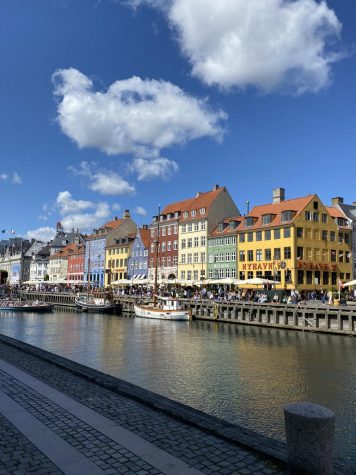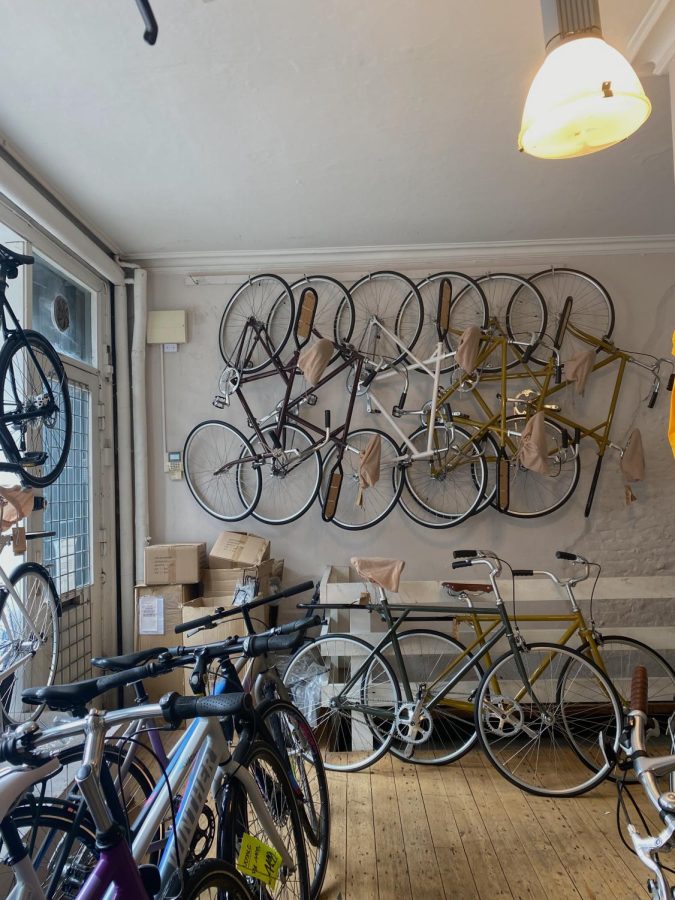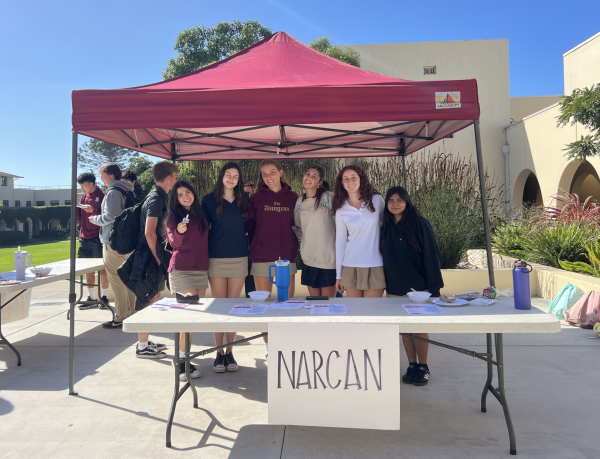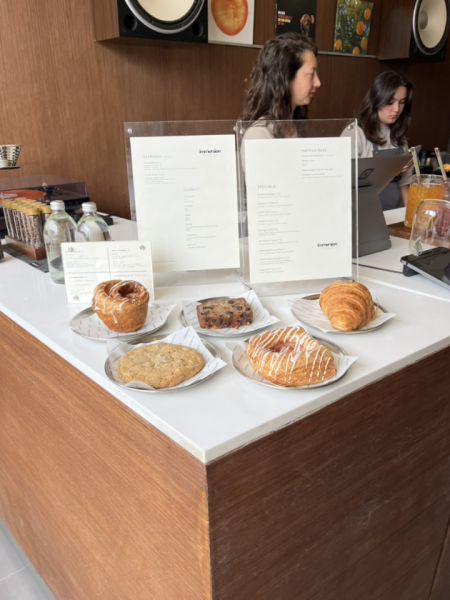Pedal Assist to the Metal
A look into the recent rise of electric biking in La Jolla
Star Cykel is a bike rental store on Norrebrogade, the main shopping street of Copenhagen.
You’re driving up Torrey Pines Road, and it’s one of those days where traffic is so backed up it’s almost stopped. Everyone on the road is in a bad mood, just trying to get home for the afternoon. You’re looking up at the sea of brake lights ahead, wondering why everyone has to be driving somewhere today, but you know you’re also adding to the problem. Subconsciously, you’re thinking about global warming and how much gas these cars are guzzling. That’s when you see some kid whiz past in the bike lane, riding up the hill past all the stopped traffic without any signs of exertion. He’s got an electric bike, you realize, suddenly wishing you had one for yourself.
Electric bike sales have skyrocketed during the pandemic, especially after stores were allowed to re-open. Richard Thorpe is the founder of Gocycle, an e-bike company specializing in their “GX” folding model. In May 2020, he told The Verge that sales of the GX were up 65% compared to a year ago then. “COVID is pulling the [e-bike] adoption curve forward,” Thorpe said.
Rad Power Bikes, a company based in Seattle, stated that their sales were up by a whopping 297% in April of 2020 compared to April of 2019. Additionally, starting in March of 2020, Google Trends reported a spike in the search “best electric bike” globally. Why have e-bikes gained so much popularity recently? And is La Jolla ready for this change?
Many Bishop’s students are now avid electric bikers. For instance, James Farrell (‘24) uses his e-bike almost every day. “I use it to get around anywhere remotely close to my house, and to go on adventures as well,” he said, thinking of an e-bike as “a motorcycle that allows you to get some exercise in.”
For Emeraude Westlake (‘24), it’s a matter of convenience. “I use my bike every day to go to school,” she said.“My parents both work, so it’s easier for all of us if I get to school on my own.” Since she isn’t old enough to drive, an e-bike was the most practical second option. Similarly, Max Stone (‘22) used his dad’s e-bike frequently before he could drive. “Now, it’s a little more impractical given that I have a car, but I did use it to get around before,” he said.
Although these Bishop’s students’ experiences reflect the growing popularity of e-bikes in La Jolla, many European cities are much further ahead. According to World Economic Forum, growth forecasts indicate that the number of e-bikes sold annually in Europe “could go from 3.7 million in 2019 to 17 million by 2030.”

Copenhagen, for example, is ranked by WIRED as the number one most bike-friendly city in the world. There, bikers outnumber drivers, with over 62% of commuters biking to work or school. The city contains 675,000 bicycles and only 120,000 cars, reports World Economic Forum. Additionally, these impressive statistics pertain mostly to non-electric bikes, further demonstrating the city’s forward-thinking as regular bikes truly have no negative effect on the environment. Amsterdam is ranked a close second, followed by Utrecht (a largely populated city in the Netherlands) in third.
Tate Vaccaro, copy editor for The Tower, visited Copenhagen this past August and loved experiencing the city’s progressiveness regarding transportation. “There are designated bike lanes on every street, and even little bike traffic lights,” she described. “The infrastructure there makes it super efficient and easy.” Biking in Copenhagen felt much safer to Tate than it does here, due to larger bike lanes and better separation between bikers and drivers on the road. “There were fewer people using cars, so it was certainly safer to bike in general,” she added.
With the rise of electric biking, many have concerns about safety for bikers in La Jolla. “There could definitely be more bike lanes in La Jolla,” said James, adding that Torrey Pines is “crazy dangerous.” Emeraude agreed, explaining that she avoids biking on Torrey Pines for that reason. For her daily commute to and from school, the area where it feels the most treacherous is Pearl Street. “Cars go so quickly on that street, and there’s no bike lane,” she elaborated. “Also, sometimes there are cars parked on the curb, so you have to swerve into the road.” After the school year started up again, Emeraude noted an increase in traffic, worsening these safety issues. Max had the same view, saying, “There are definitely certain areas in La Jolla where there should be more bike lanes, to make it safer for both bikes and cars.”
In order to get on track with cities like Copenhagen and Amsterdam, major updates will need to be made to La Jolla’s traffic infrastructure. With such temperate weather that makes it ideal for biking year round, one would wonder why we have not made these changes already.
Seventh Grade Math Teacher Mr. David Johnston is known to be seen around campus with his bike by his side. “I try to ride every day to school. I’m fortunate enough to live in Mission Beach, so it’s about a four mile ride,” he said. Although he wouldn’t consider using an electric bike himself due to his mostly flat commute (“the rigors associated with my ride are pretty minimal,” he said, laughing), he appreciates the environmental aspect. “My sense with electric bikes is, if it encourages people to get out of cars, then I think that’s a great thing. Being able to be outside, in this beautiful place we’re lucky enough to call home – it’s pretty spoiling.”

Isadora is a senior and an Editor-in-Chief. A four-year member of The Tower, she loves to write about a variety of topics, from school coverage to national...

Tate Vaccaro joined The Tower staff in 2019 as a sophomore in hopes of bettering her writing skills and learning more about the Bishop’s Community. She...







